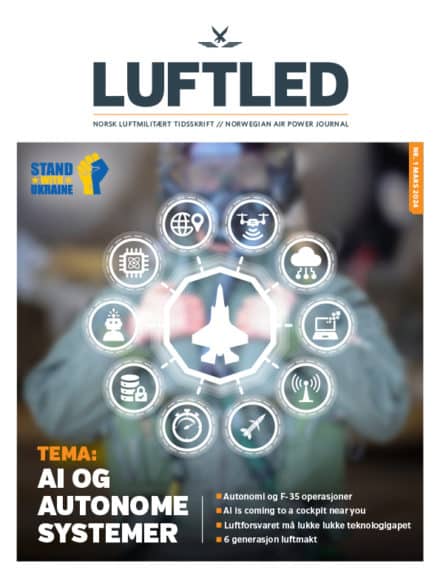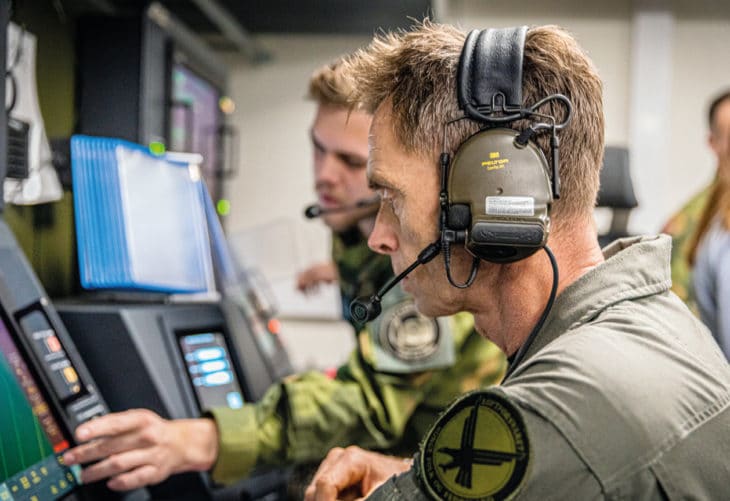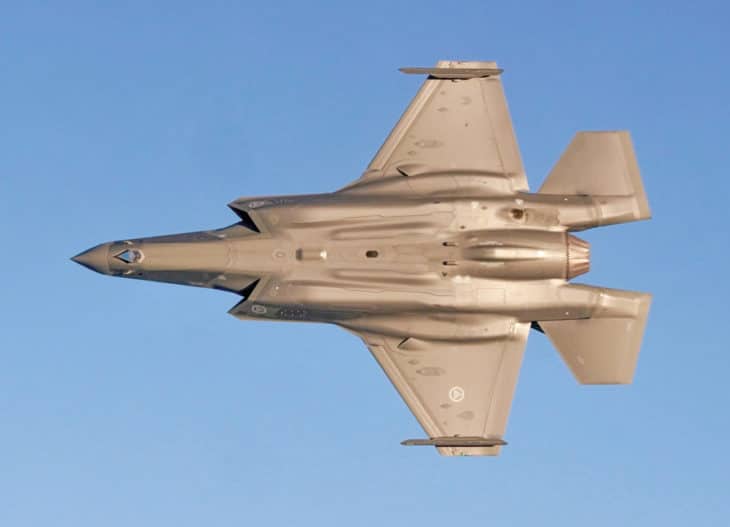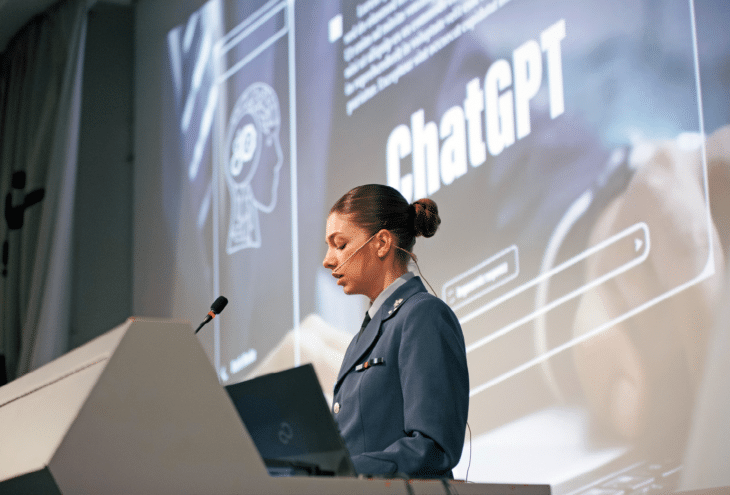AI and unmanned platforms in Ukraine
Human civilisation and its military sector evolve together with technologies. Often, times of crisis and war stimulate technological innovation, adaptation, and implementation faster than other situations.
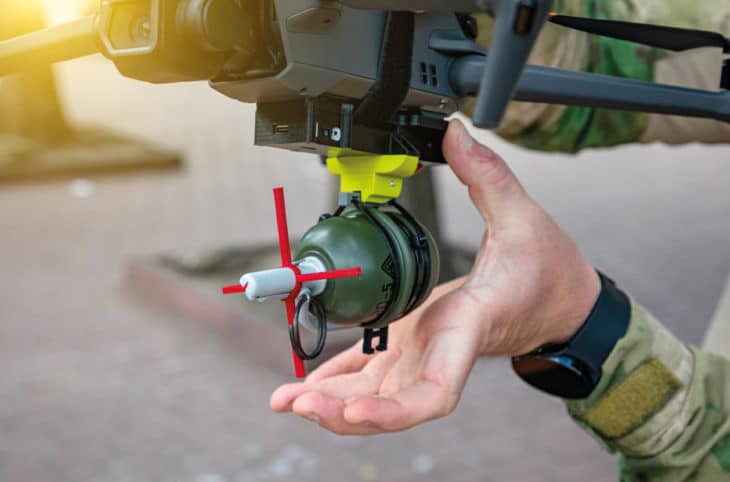
The vital necessity of survival often encourages creativity and the use of best practice in employing available technologies and inventing new ones. The ongoing war in Ukraine illustrates numerous innovations and adaptations in technology and fighting tactics across different domains of warfare. While the spread of some technology and know-how might only be known to experts in specific domains, the increasing role of artificial intelligence (AI) in the fighting in Ukraine has been widely discussed in public and professional circles. The purpose of this article is to focus on the employment of AI in the aerial domain, addressing the overall trends in the Western, Ukrainian and Russian use of AI and automation. Furthermore, the article addresses how the thinking is changing as a result of the experiences of the war.
Western approach to AI and automation in the aerial domain
It goes without saying that the Western approach to AI and unmanned platforms is characterised by taking advantage of the most advanced technological developments and building well-networked systems, with AI and machine learning being at the heart of this approach and also part of various processes. In this regard, the focus is on strengthening capabilities in the fully integrated multi-domain battlespace. As regards fixed-wing aircraft, the focus is on the development of high-tech multi-functional unmanned combat aerial vehicles (UCAVs) in the role of supportive wingmen. The primary purpose of drones in this context is to be well-integrated with the next generation of manned platforms to conduct joint missions. The most distinctive feature of this programme is that the level of automation is being increased, allowing for better adaptability and hence better survivability of UCAVs in the battlespace. In essence, the loyal wingman will provide additional mass and cutting-edge adaptability in the battlespace of the future. One recent initiative within this framework is the US–Japan agreement to conduct joint research in AI into the use of drones to serve as loyal wingmen for the next generation of Japan’s fighter jets. Japan plans to develop its next-generation fighter aircraft by 2035 in cooperation with the UK and Italy.1
The second year of the full-scale invasion have illustrated that the Russians are learning and are adapting to the challenges posed by the technologies in the battlespace
From the perspective of the employment of drones in warfighting on their own, the Western focus has been on speeding up the kill chain, especially through identification, tracking and targeting.2 This was very much the consequence of the experiences of employing drones in the counterinsurgency (COIN) environment in Iraq and Afghanistan and the increased necessity of tactical ISR in the rapidly changing environment and fast tempo of warfighting observed in recent conflicts.3 In this regard, the quality of data remained the core factor in the improvement and reliability of automated systems and AI. One of the distinctive features of Western limitations in the development of unmanned and AI platforms is the legal and ethical considerations of their testing in combat. For example: «in the United States, testing an AI-enabled system in combat directly violates the Department of Defense ethical AI principles and long-established international norms.»4
Ukrainian approach to employing AI and automation
As a full-scale battlespace, Ukraine has become a particular type of laboratory for numerous tests of Western technologies and of their synergy with Ukrainian innovations and adaptations across different sectors of the fighting. Unmanned platforms and AI are no exception. Various private western AI companies like Palantir have established a presence in Ukraine and provided software and different technical solutions for integrating multi-faceted platforms and channels of information into a cohesive system of data gathering, processing and intelligence development:
Palantir’s software, which uses AI to analyze satellite imagery, open-source data, drone footage, and reports from the ground to present commanders with military options, is “responsible for most of the targeting in Ukraine,” according to Karp.5
In other words, given the constantly increasing flows of data from multiple sources, AI allows us to process that data according to certain patterns of behaviour and hence allows us to identify different targets. Hence, in essence, the Ukrainian employment of AI in the battlespace follows the Western focus on the improvement of situational awareness and the speeding up of decision-making, hence shrinking the kill chain to mere seconds. In essence, the trend towards improving tactical ISR and enabling faster decision-making on the tactical level persists. A much faster Ukrainian targeting cycle allowed them to gain a significant advantage over the Russians, who required more time for target detection and engagement using their unmanned platforms.6
Another important consideration in the use of automated platforms in Ukraine is the necessity of deconfliction between the numerous drones and other assets being used simultaneously across the frontline, not to mention the fact that enemy capabilities create an additional problem in seeing a clear picture of the battlespace. As usual the solution was the development of an app to provide better situational awareness and improve the deconfliction of different assets in the aerial domain. According to Air Marshal Johnny Stringer (RAF), Ukraine achieved «focused innovation«, combining various platforms from small, medium and big technologies in creating app-based ISR and command and control (C2).7
The combination of AI and unmanned air systems (UAS) in Ukraine has also been used for less kinetic purposes such as mine detection and mapping,8 the documentation of Russian atrocities and war crimes, recording landscape changes and the results of the Kakhovka dam destruction, and so on. Unmanned vehicles are also being used to monitor the state of agricultural areas after Russian missile attacks and to clear agrarian areas of missile debris.
Russian approach to employing AI and automation
The initial Russian use of unmanned and AI technologies lagged behind the Ukrainian innovations and the employment of the Western AI solutions provided by private companies like Palantir. Their preliminary production of UAVs was focused more on ISR functions than on tactical use, illustrated by a significant scarcity in their employment of drones for tactical purposes on the frontline. However, the second year of the full-scale invasion, and the last few months in particular, have illustrated that the Russians are learning and are adapting to the challenges posed by the technologies in the battlespace. Learning from the Ukrainian tactics and solutions, the Russians began to employ drones more for tactical purposes on the frontline and not only for mass attacks on Ukrainian cities and the civilian infrastructure. In part because of the limitations of their numerical advantage in mass barrages and their losses across various aerial assets in Ukraine, and accepting the prolonged nature of war, the Russian military industry switched to the mass production of drones of various levels of complexity and diversified use. Accordingly, their defence budget for 2024 increased to 6% of GDP.9 According to the recent official strategy, Russia’s increased target for drone production is 1 million by 2026 and 1.5 million by 2035, with an average annual production rate of more than 13,000 for 2023-2026.10
Furthermore, numerous claims were made by Russian volunteer groups about the development of new unmanned platforms with integrated AI technologies. While the credibility of these claims is debatable and they cannot be verified, experts have identified certain features of the Russian approach to AI and automation. First, unlike the Western and Ukrainian approaches, the claims and developments appear to show that the Russians are focusing more on removing humans from the loop of decision-making by having a potential full automation of the kill chain.11 From the perspective of innovation, Russia is adapting to the vulnerability of the operators of first-person-view drones, who are being specifically targeted on both sides. Second, Russians are known for giving little value to human life, so they do not have any ethical dilemmas about facilitating full AI control of the kill chain.
Times of crisis and war stimulate technological innovation, adaptation, and implementation faster than other situations
Third, Russian drone production activities in 2022-23 were more reactive than proactive. Although in the last six months more claims have been made about the increased involvement of volunteer initiatives in drone development and production, «in Russia, the armed forces and military industry are in an over-regulated and non-flexible institutional environment, which prevents the Russian military from fast improvements«.12
Conclusion
Any war leaves its imprint on strategic and military thinking, and this war is no exception. Some points for consideration follow. First, AI and unmanned platforms are integral parts of modern and future warfare. Second, the current fighting environment is characterised by speed and an increased tempo, which are only exacerbated by more advanced technologies; AI and automation serve as a means for catching up with the speed, and provide the most relevant data processing for shortening the kill chain. Third, the amount of data is likely to increase through the widespread use of sensors from various platforms. Fourth, the potential Russian move to full AI control of the kill chain illustrates the further limitations of fighting an enemy who does not abide by the same rules of war and does not have the same moral and ethical values as liberal democracies. Hence, there is a need for the additional countering of the capabilities developed by such an enemy. Fifth, from the military industry perspective, AI and unmanned solutions, like any weapons, are only as good as their testing in real fighting. Hence, the technologies and companies whose products prove to perform effectively in the very contested battlespace of Ukraine are likely to dominate the market in the future. Finally, claims that the future battlespace will be fully unmanned or AI-controlled are still too far-fetched. While the war in Ukraine illustrates the significant increase in the use of AI and unmanned technologies, these are just one piece in the puzzle of multiple capabilities used across different domains. The core of Ukrainian innovation and adaptation remains the Ukrainian people across all services and the civil–military spectrum.
